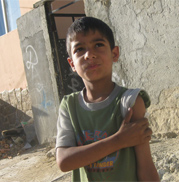 The short answer is ‘vaccination’. But helping children and their parents to access health services is not always easy.
The short answer is ‘vaccination’. But helping children and their parents to access health services is not always easy.
According to the new EU Roma Health Report, child mortality in Roma communities is much higher than for other children born in the same town, in the same country.
The causes are complex and include low quality housing, poor nutrition, lack of parental education and weak links to health services.
The result is a lack of community immunity, where the spread of diseases is contained because enough people in a particular group are vaccinated.
This means than when there is an outbreak it hits Roma children hardest, like the 2010 measles epidemic in Bulgaria where 90% of cases were recorded in the Roma community.
Note that we are saying ‘recorded’. The reality is that there were likely to have been many more cases that were not picked up and that a higher proportion of these were likely to be among people with loose connections to formal health services.
Translation: the proportion of measles cases in Roma communities is much higher because they often do not have a regular doctor and receive no treatment in the community. The first health authorities know about some of these cases is when someone is hospitalised or dies.
Read our exclusive interview with a Health Mediator working with Roma communities
There are legal, administrative and financial hurdles that make it difficult for Roma communities to avail of free healthcare.
Fixing this is a matter of life and death for Roma children. It is also one of the key issues in wiping out measles in Europe.
Europe will certainly miss its 2015 measles elimination target and a new deadline will be set, accompanied by a renewed push to identify – and reach – pockets of unvaccinated people.
Eliminating measles is possible. Very possible. The tools and the knowhow are there. It has been achieved in Latin American countries with far fewer resources than those available in Europe.
But for Europe to be declared measles free, immunisation rates in the Roma community must be greatly increased.




